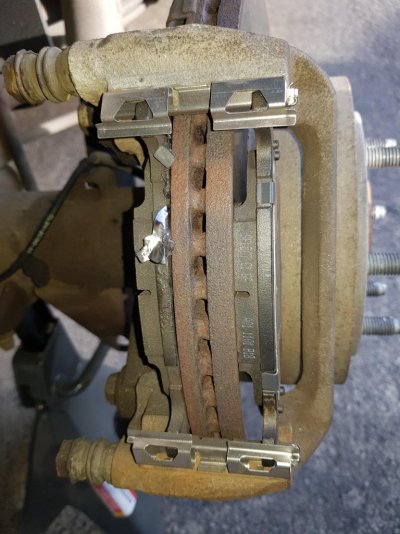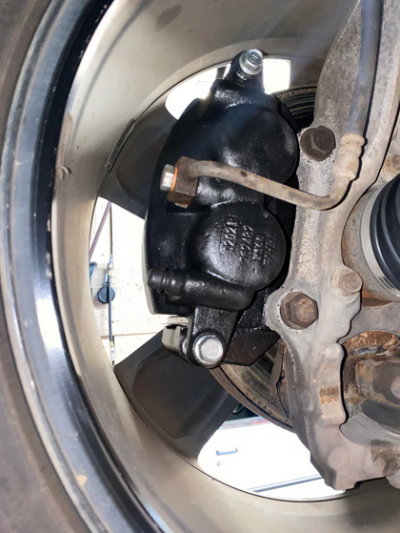GreenRacer 64
Junior Member
- Joined
- May 25, 2025
- Posts
- 1
- Reaction score
- 0
- Location
- Seattle
- First Name
- Bruce
- Truck Year
- 1978
- Truck Model
- C10
- Engine Size
- 350
Hi All,
I have a '78 Stepside and i bought a Cadillac Eldorado rear brake conversion kit to upgrade my truck. Unfortunately, I cannot get the brakes to firm up after bleeding. I understand they are notoriously hard to bleed and I either still have air in them or i've got a missmatch of hardware.
This is the hardware I am running:
*JEGS Rear Disk Brake Conversion 965-TRD4745
*JEGS Disc/Disc Proportioning Valve 555-631292
*The Right Stuff DBMC05 Disc/Disc Master Cylinder (1" bore)
*Brake lines are factory. 1/8" front, 1/4" rear
*Front brakes are stock calipers
*All new soft brake lines
I changed out the out the original Disc/Drum master cylider and proportioning valve but I cant get the brake pedal to firm up after many, many attempts to get them bled.
When it comes to bleeding I've tried gravity, brake pedal pumping, and a vacuum bleed system that I purchased. I've always positioned the bleed valve at the highest spot and even gone so far as to tap the rears with a hammer to knock loose any air if it was trapped in the rears. I've even taken the rears loose while vacuum bleeding, tapping them with a hammer and roating them to try and remove any trapped air. Finally, I have an ASE Certified Mechanic best buddy come over and we rebled the entire system starting at the master cylinder we bled each component only to continue to have a soft pedal.
If I pinch off the rear center bake line so only the front brakes are involved, the pedal is firm. This confirms the problem is in the rear.
I could really use some help. Do I have the right Master Cylider and Proportioning Valve? I find it hard to believe I still have air in the system. I've bled them no less than 20 times and i've been bleeding brakes for 20 years. Thanks for your feedback!
I have a '78 Stepside and i bought a Cadillac Eldorado rear brake conversion kit to upgrade my truck. Unfortunately, I cannot get the brakes to firm up after bleeding. I understand they are notoriously hard to bleed and I either still have air in them or i've got a missmatch of hardware.
This is the hardware I am running:
*JEGS Rear Disk Brake Conversion 965-TRD4745
*JEGS Disc/Disc Proportioning Valve 555-631292
*The Right Stuff DBMC05 Disc/Disc Master Cylinder (1" bore)
*Brake lines are factory. 1/8" front, 1/4" rear
*Front brakes are stock calipers
*All new soft brake lines
I changed out the out the original Disc/Drum master cylider and proportioning valve but I cant get the brake pedal to firm up after many, many attempts to get them bled.
When it comes to bleeding I've tried gravity, brake pedal pumping, and a vacuum bleed system that I purchased. I've always positioned the bleed valve at the highest spot and even gone so far as to tap the rears with a hammer to knock loose any air if it was trapped in the rears. I've even taken the rears loose while vacuum bleeding, tapping them with a hammer and roating them to try and remove any trapped air. Finally, I have an ASE Certified Mechanic best buddy come over and we rebled the entire system starting at the master cylinder we bled each component only to continue to have a soft pedal.
If I pinch off the rear center bake line so only the front brakes are involved, the pedal is firm. This confirms the problem is in the rear.
I could really use some help. Do I have the right Master Cylider and Proportioning Valve? I find it hard to believe I still have air in the system. I've bled them no less than 20 times and i've been bleeding brakes for 20 years. Thanks for your feedback!



